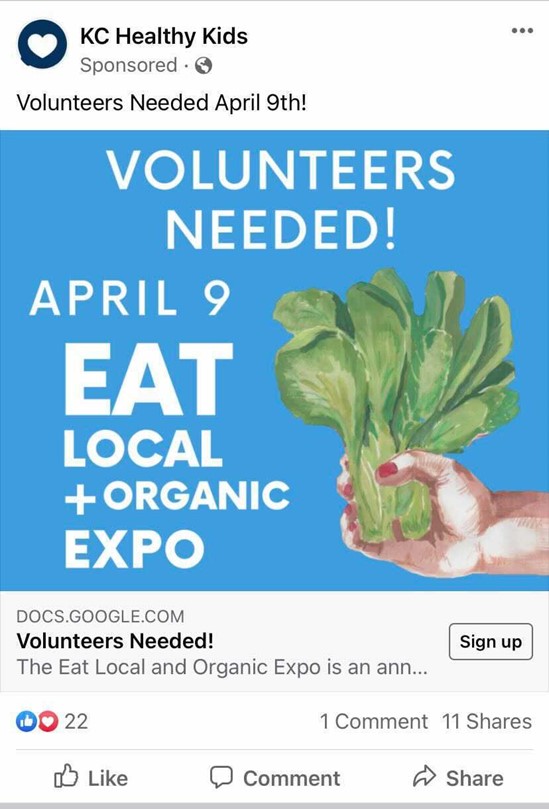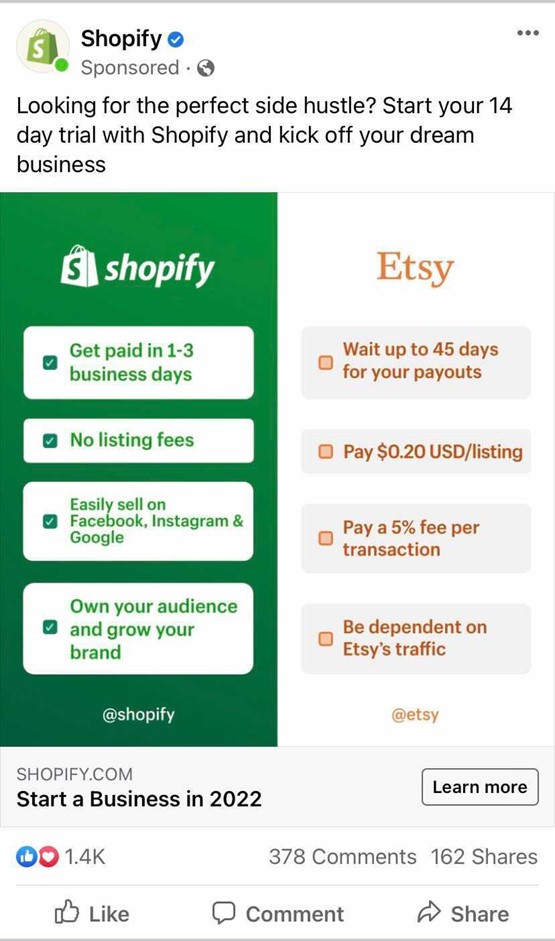The world of Facebook Ads revolves around a few distinct ideas—the first being your objective, the second being your ad format, and the third being your targeting options. While many can get these mixed up, understanding the purpose of each of these will help you understand how Facebook Ads work and how to sort through the many different types to create an effective engagement tool.
Facebook Ad Objectives
The ad objectives refer to your goals as a business owner. There are 15 objectives that business owners can choose from that fall under one of the three parent types: awareness, consideration, and conversions.
Are you trying to reach new audiences, drive traffic to your site, or sell products? All 15 of the objectives fall under key micro-moments of the buyer cycle that Facebook has designed into its platform. While you’ll actually pick your ad creation from the 15 objectives, keep the parent types in mind to stay focused on the final marketing goal.
Awareness
Awareness ads aren’t meant to rush the buyer to the checkout lane. Instead, this objective is centered around introducing your brand to new audiences. Think of it like an elevator pitch or the “tell me about yourself” question often asked in interviews. You want to share enough to show off your company’s offerings and leave a good impression.
- Brand Awareness
- Reach
Consideration
Consideration ads draw your audience in and are meant to increase engagement. Whether you’re looking to rack up likes, website visits or downloads, this is the space to do so. It’s like a well-designed storefront window that lures potential customers into your store.
- Traffic
- Engagement
- App Installs
- Video Views
- Lead Generation
- Messages
Conversion
Conversion ads look for a specific action from your audience. These ads signal that people are getting very close to the end of the sales cycle. They’ve noticed you, browsed, mingled, sipped on some drinks, and are all warmed up to convert. Results of these ads are the easiest to measure. The link sends them to their final destination (product check-out, store, event registration, newsletter sign-up, etc.) and the second they hit submit, it becomes a new data point.
- Conversions
- Product Catalog Sales
- Store Visits
Facebook Ad Formats
While ad objectives are focused on your end marketing goal, the ad format is meant to give you nearly limitless strategies towards reaching your goal. The format is the creative manifestation of your marketing objective and, as such, should be selected to fit your purpose.
Ad formats that are used on Facebook include:
- Video Ads
- Photo Ads
- Slideshow Ads
- Carousel Ads
- Canvas Ads
- Dynamic Product Ads
- Lead Form Ads
Different ad objectives allow for different formats. Again, it is all about having an appropriate medium to reach your goal. This is why it wouldn’t make sense for Facebook to let you use a Lead Form Ad to generate traffic.
What Does a Facebook Ad Look Like?
We’ve all seen Facebook Ads on our Feed as we scroll through status updates, news, and photos. While all of these can present themselves in different ways, we are able to recognize an ad when we come across one. Usually, they consist of videos, slideshows, photos, or other visual content paired with copy meant to attract our attention and tempt us to click.
A Facebook ad layout is something that can easily be picked out while you’re scrolling through the social media platform. The company name is clearly displayed followed by a “Sponsored” indicator beneath it. This shows you that this isn’t appearing because you follow the page or like the content, but because this ad is specifically being targeted towards you and audiences like you.
Below these required sections, the content is up to the creator’s control. Most ads will include a few sentences about the company, a visual, and a call-to-action. This is where the ad format comes into play and you’re able to experiment with pictures, videos, carousels, and more.
At the very bottom of the ad, you and everyone else will be able to see the engagement, from reactions and comments to shares and views. Of course, there is always the option for the viewer to like, comment, and share the ad themselves which is also located at the bottom of the ad.
Facebook Ad Content
While there are a variety of Facebook ad categories (reference the list above if you need a refresher!), the content you’ll find on each of them is widely diverse and up to the imaginations of the marketing teams behind them. And with how innovative technology and marketing has become, it means we’re being exposed to cool new ads all of the time.
When it comes to content, the goal is similar to those Facebook Ad Objectives we mentioned earlier. You’re either creating content to bring awareness to your brand, get the audience to consider your brand, or persuade the customer to convert.
Here are some creative examples of each type of content:
Awareness
There’s no better way to share a product or tell a brand story than with a video. This video introduces the audience to the newest Kirby game available on the Nintendo Switch. It shows off the stunning graphics, new gameplay modes, and the fun landscapes the player is able to adventure through. A quick video like this gives the audience a perfect glimpse into what they can expect.
Consideration
It’s a bit scarier for people, especially those who have a fear of needles or blood to click on an ad that states, “donate blood now”. This ad took a lighthearted approach and used a gentle “learn more” button to nudge audiences in their direction.
Also, major props to the marketing team on this one because I’ve seen reasons up to #322 floating around out there.

Conversion
Finally, a conversion ad with the direct button letting audiences know they can “shop now” by clicking on the link. This ad comes with an eye-catching picture that highlights the products and a few sentences of copy to really emphasize the importance of first impressions and the opportunity that a standout business card brings.

Popular Facebook Ads
With all the types of formats available, you wonder why you don’t see all of them circulating the social media platform during your daily browsing. For one, you might not be the right target audience for a specific company that is using them. A bigger reason is also because social media and marketing trends are always changing. What was popular then will not always be popular now. Here’s what we’ve noticed the most when we scroll through our Feeds:
Pictures
Pictures are worth a thousand words and that will always be the case. There are still endless ways to create an attention-grabbing image that will do the job perfectly. Here are some of the ads we found that easily told their story through the power of an image:


Videos
Just like the Nintendo ad we shared earlier, videos are useful for giving further context on products or services. But what we’ve noticed becoming more and more popular is the use of more animated, gif-like videos rather than full on recordings.
While videos can showcase stunning scenes, sometimes we don’t always have the time, budget, or resources to create them. A quick animation can do the job just as well. Just take a look at these fun ones we found!
Carousels
Finally, Carousels are starting to show up on our Feeds much more than they did in the past. These allow people to swipe through multiple images and/or videos within an ad. This is a great way to show off different products and opportunities for the viewer to jump on. Take a look at this Acuvue ad which displays an offer for contact lenses, touches on the importance of comfort, and gets you to book an eye exam today or this Kultured Travels ad which will trigger anyone’s sense of wanderlust.
Facebook Targeting Options
There are thousands of options when it comes to targeting on Facebook. You can choose to target audiences on a global or local scale, at different ages, from different backgrounds or occupations—there are millions of ways to go about this especially when you start combining criteria for your ads. Not all industries are treated equally by Facebook, however. Advertisers in Credit, Housing, Employment or Politics must opt into “Special Ad Categories”, which restricts the use of Facebook targeting capabilities as a means to eliminate discrimination.
Because Facebook is inherently a social platform, you can also use the power of connections, interests, and social media behavior to cater to your current audience or find new ones. By including information like hobbies or past purchases, the platform allows you to customize your ad campaigns based on the exact goals you’re hoping to reach.
One of the key ways that Facebook helps you engage old, current, and new audiences is with their audience selection tools. These include Core Audiences, Custom Audiences, and Lookalike Audiences.
Core Audiences reach the consumers who fit your customer profile based on demographics, interests, locations, and behaviors. Custom Audiences help you reach anyone that slipped between the cracks or that has interacted with your brand before but has since fallen off the radar. Finally, Lookalike Audiences will find new audiences who are most likely to become new customers.
How to Advertise on Facebook Effectively
The way Facebook’s Ad Manager was created gives you the exact ad format you need to advertising effectively. Remember how we emphasized the importance of understanding the distinct aspects of Facebook ads ~1600 words ago? Use that knowledge and understanding to drive your campaigns and have a specific focus in mind when you’re creating your ads.
A few tips to keep in mind as you work through this process:
- Only a Business Page can run ads so if you haven’t converted yet, take steps towards doing so. Once you have, you’re able to run entire marketing campaigns from Facebook Ads Manager and Boost, Promote, and Engage to your heart’s desire.
- Ads Manager is your control center. Use it to set up and monitor details of your campaign—everything from managing your spend and schedule to finding your audience.
- It’s not just Facebook where your ads can be seen. Leverage the partner platforms like Instagram, Messenger, and even the Audience Network to get your campaign in front of more eyes.
- The audience capabilities in Facebook are wide and varied. Take some time to build several target audiences based on different demographics and behaviors.
Sketch it out if you need to.
Outline the buyer cycle and divide it into the objectives Facebook uses—awareness, consideration, conversion. Then, list out each of the 15 ad types that fall within the parent categories. Are you wanting to generate awareness? Great, start with a Reach Ad and figure out the ad format within your means that would fit this objective. Maybe this means showing off a picture of your cool new facility with “get directions” as the call-to-action, or a quick video that shares your company’s mission. Finally, send your clearly outlined objectives and format requirements to your brilliant marketing team and let them run with it.
Need some assistance with Facebook or other social media ads? Contact us at expert@emfluence.com!



